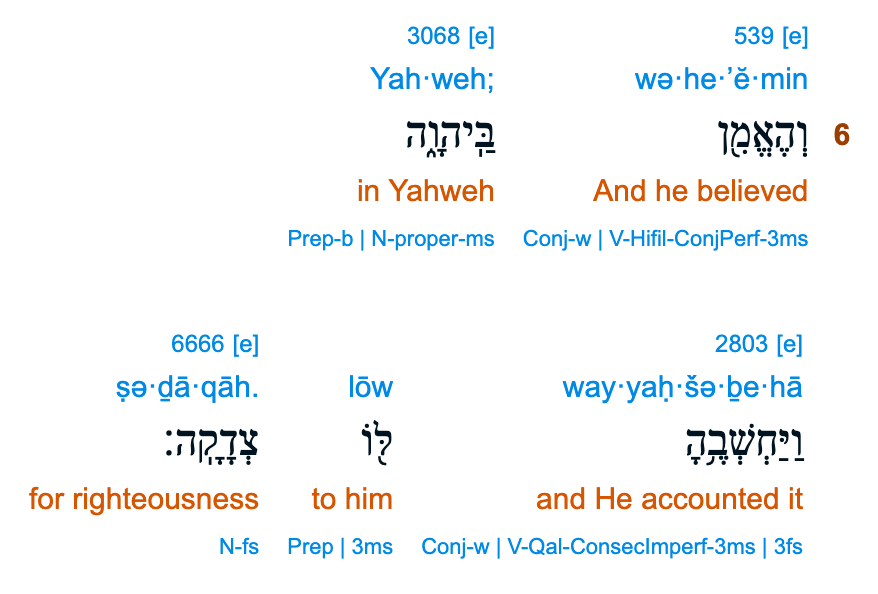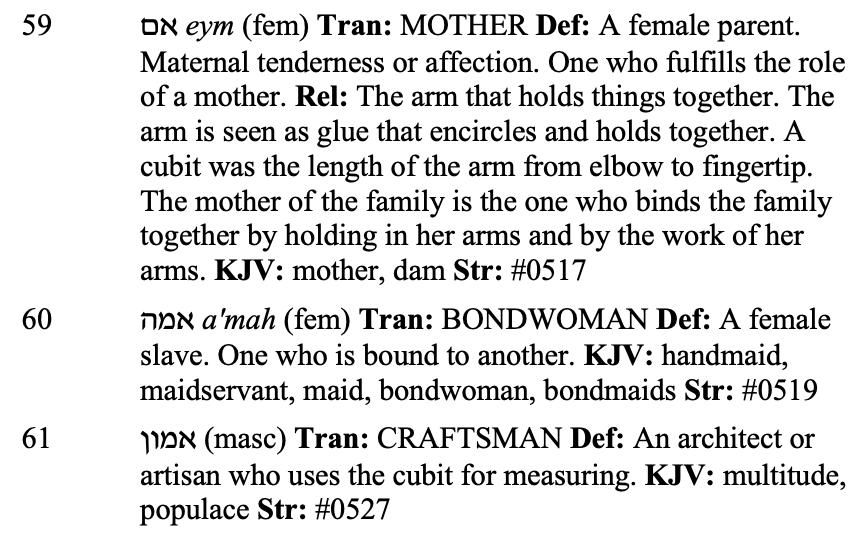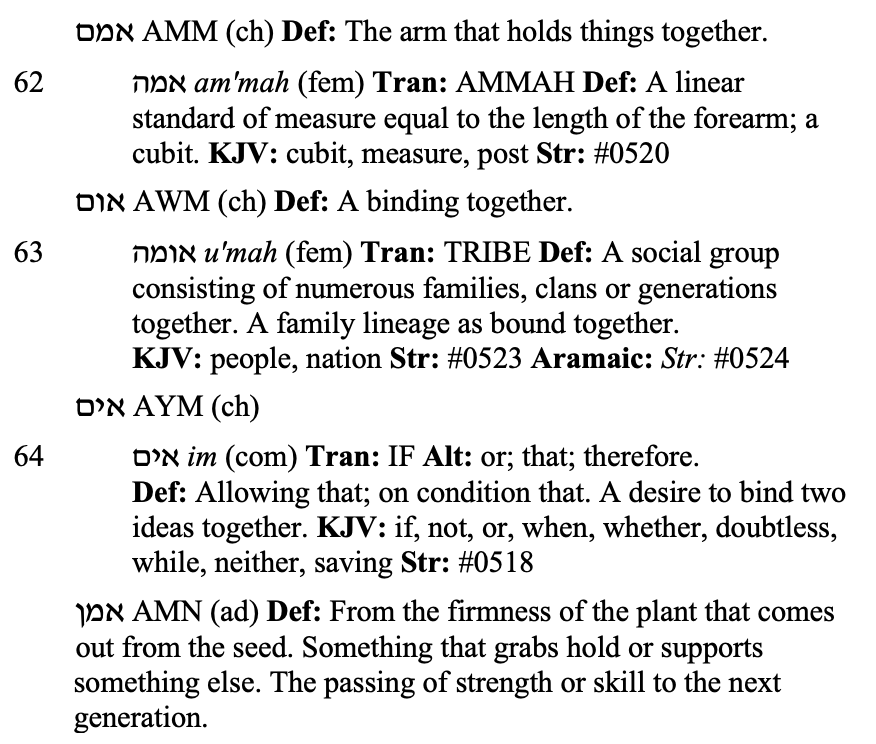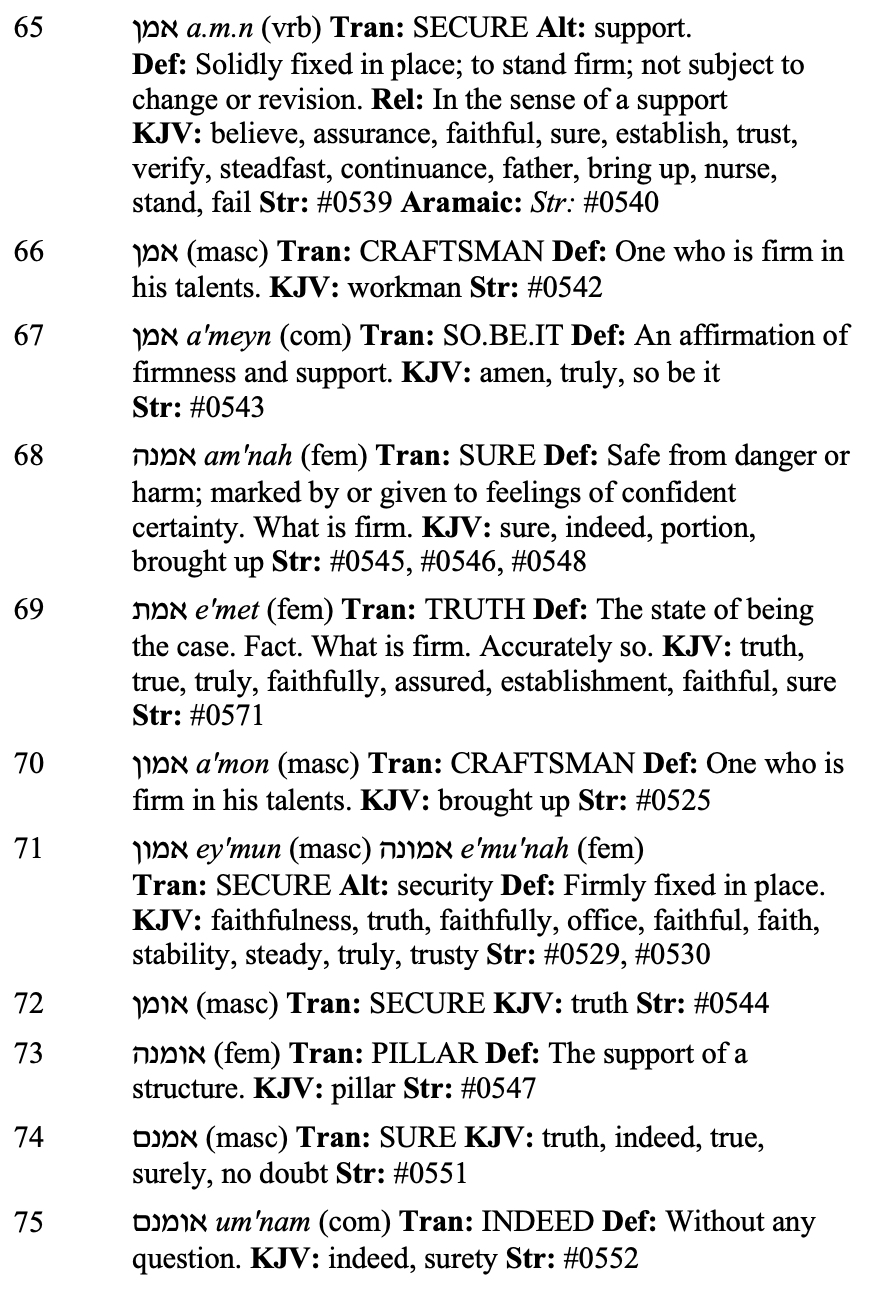How to Do a Hebrew Word StudyLesson 4: Digging Deeper with a LexiconIf you want to go beyond Strong’s Dictionary when defining Hebrew words, you'll need a lexicon that identifies a word’s root and all the words that are derived from it. Most Hebrew lexicons, however, require you to know at least the Hebrew alphabet in order to locate a word. To help with this, I’ve created Benner's Lexicon of Biblical Hebrew and I am making the e-book available to you for your Hebrew word studies at no cost. I designed this lexicon specifically for Bible students like you who do not know Hebrew. It allows for in-depth Hebrew word studies without needing to recognize Hebrew letters or know the grammar. Step 1: Start with BibleHub In this lesson, we are going to switch our study from the word mercy, to the word believe. We’ll begin by looking at the word “believed” in Genesis 15:6 using BibleHub’s interlinear tool:  The word translated as “believed” is Strong’s #539. Step 2: Search in the Lexicon In the back of the lexicon, you'll find an index that allows you to convert Strong’s numbers into the equivalent lexicon entries. If you're using the digital version, you can simply search the ebook for #0539.  This brings us to the verb a–m–n (אָמַן), which I define as "secure." Notice how “secure” is a much more concrete term than “believe.” It suggests an action—a state of being firm, supported, or upheld—rather than an abstract thought process that the English word believe implies. Step 3: Discover the Root Family To deepen our understanding of this verb, we will need to look at its parent root. Most Hebrew words are built on three-letter roots, but those, in turn, come from two-letter parent roots. The verb a–m–n comes from the two-letter root AM.  Take a moment to read through the entry for this parent root. Step 4: Explore Related Words Below the parent root entry, you'll see all the related roots and words that are derived from it. As you read through them, look for a shared theme or function that connects them.  Among the three-letter roots derived from AM are:
 The final one, AMN, is the root for the verb we're studying. Beneath that, you’ll see all the words that stem from this same root.  Notice how all these words share the underlying idea of being firm, supported, or secure. This is the concrete foundation behind the abstract English translation “believe.” Key Takeaway By following the root trail and comparing related words, you move from abstract English ideas to the original, concrete concepts behind the Hebrew. This approach reveals how biblical words functioned in the minds of the ancient Hebrews. Next Up: Defining Words through Parallels Up to this point, we have learned how to trace Hebrew words through root families and explore related terms to uncover their original, concrete meanings. These tools help us move beyond surface-level definitions and into the thought world of ancient Hebrew culture. In this final lesson, we’ll introduce one more powerful tool — one that’s especially helpful when a word appears only once or is difficult to define. That tool is parallelism. Nearly three-quarters of the Hebrew Bible is written in poetry. But unlike Western poetry, it doesn’t rely on rhyme or rhythm. Instead, it uses repeated ideas — often in pairs — to reinforce meaning. These poetic parallels served not only as memory aids, but also as interpretive keys. In this lesson, you’ll learn how parallelism works, and how it can act as a built-in commentary to help define abstract words. We'll return to ḥesed one last time and see how a poetic line in Psalm 51:1 brings this word — and its companions — to life. Let’s dive in.  |
|
Copyright © 2025 |


